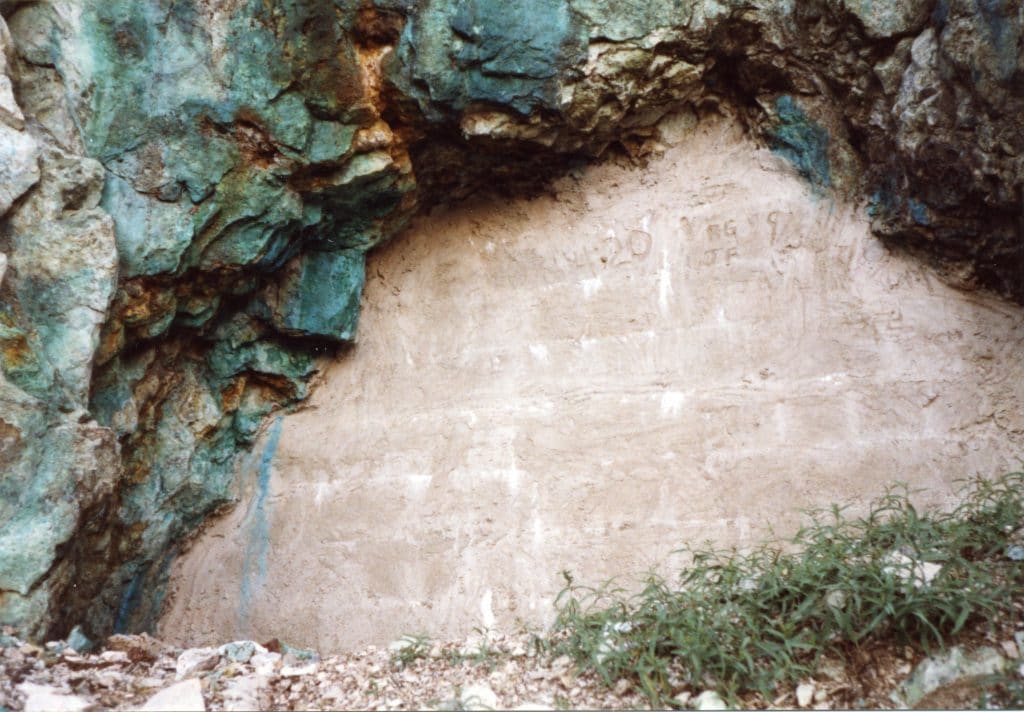In the late 1800s, people from Provo, Salt Lake, and Park City traveled to bathe in Midway’s “hot pots,” natural mounds with pools of steaming water at the top. One large, dry pot located near the mouth of a canyon was home to thousands of rattlesnakes, giving rise to the canyon’s name: Snake Creek Canyon. The snakes were seen as pests and eradicated, and the dry pot became a limestone quarry.
Snake Creek Canyon saw significant mining activity. In 1894, a reporter wrote of a “handsome specimen of copper” from the head of Snake Creek Canyon. In 1897, the Steamboat Company began work on a mine there. The company’s owners included some familiar names: W.V. Rice (one of the owners of the Silver King); James Farrel (a “well-known Park City mining man” and one-time Park City mayor); W.W. Armstrong (Park City’s First National Bank); D.C. McLaughlin (member of the Michigan bunch and a former Utah legislator) and R.T. Kimball.
In 1899, the Raddon, Thacker, Bronson and Van Wagoner claims in Snake Creek Canyon were consolidated into the Balsom Grove Mining Co. One of the owners, Samuel Raddon, also owned the Park Record. In 1900, Thomas Kearns and others bought a mine on “the old Gebhardt property” near the head of Snake Creek Canyon. In 1903, the Big Four Mining Co. dug a 180 foot tunnel near the head of Snake Creek Canyon, reportedly hitting a vein 110 feet into the mountain.
However, the Steamboat was the largest mine in the area, consisting of over 20 claims. The Steamboat began digging high up a rock wall, but decided to move down lower where work would be less vulnerable to winter weather. By 1904, the Steamboat tunnel extended 2000 feet into the mountain. “Uncle Jesse Knight,” who made his fortune in the Tintic Mining District, purchased the Steamboat for $50,000 in 1906. Knight also owned the Mountain Lake and Great Western mines just over the divide between Snake Creek Canyon and Big Cottonwood Canyon. Eventually, the Steamboat tunnel extended over 6,000 feet, ending under the Mountain Lake mine. However, although the Steamboat land had copper staining visible on surface outcroppings, Knight failed to find significant mineralization in the tunnel.
But was there a Green Monster mine in Snake Creek Canyon? A Green Monster mine located on Pioneer Ridge in Park City was patented in 1869 by George Snyder. That mine is discussed in John Boutwell’s 1912 paper “Geology and Ore of the Park City District,” which placed the mine on Pioneer Ridge. However, a Utah Geological Survey publication in 2005, citing Boutwell, mistakenly placed the mine at the head of Snake Creek Canyon. The error is, perhaps, understandable. The portal in the rock wall located some distance above the Steamboat tunnel, which may be the initial Steamboat diggings, has a large green stain around it. “Green Monster” would have been an appropriate name for the mine.

Credit: Park City Historical Society & Museum, Hal Compton Collection
Park City Museum members will hike to Snake Creek Canyon’s “Green Monster” on September 19.